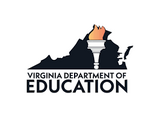
VDOE Anatomy and Physiology Content GuidelinesThese guidelines are intended to become Standards of Learning during the next science revision.
- Subject:
- Science
- Material Type:
- Unit of Study
- Author:
- Anne Petersen
- Date Added:
- 09/16/2020

VDOE Anatomy and Physiology Content GuidelinesThese guidelines are intended to become Standards of Learning during the next science revision.

In the first of two sequential lessons, students create mobile apps that collect data from an Android device's accelerometer and then store that data to a database. This lesson provides practice with MIT's App Inventor software and culminates with students writing their own apps for measuring acceleration. In the second lesson, students are given an app for an Android device, which measures acceleration. They investigate acceleration by collecting acceleration vs. time data using the accelerometer of a sliding Android device. Then they use the data to create velocity vs. time graphs and approximate the maximum velocity of the device.
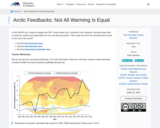
In this middle school and high school unit, students engage with 360�� virtual reality tours, authentic Arctic datasets, and app-based labs to construct models and explanations for the unit driving question, "Why might the Arctic be warming twice as fast as the rest of the world?"
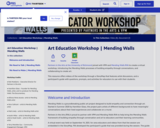
Partners in the Arts at the University of Richmond joined with VPM and Mending Walls RVA to create a virtual workshop, introducing the Mending Walls processes of building empathy through conversations, and collaborating to create art.
This resource offers videos of the workshop through a StoryMap that features artist discussions, and a participant’s guide with questions, prompts, and activities for educators to use with their students.

This unit is intended to address the VA Standards of Learning for World History II Standards 6 and 7. Students are required to explore the similarities and differences between the various Asian land empires and African societies of the 1500s-1800s, with a particular focus on geographic, political, cultural, and economic interactions with each other and the rest of the world. Through the unit, students practice information literacy skills as they research and become experts in one Asian or African empire, work with a group to develop a virtual museum exhibit on it, and explore the virtual museum exhibits created by the other groups to learn about all of the empires and synthesize the unit content. The unit, which is separated into 6 modules, was designed for use in a virtual learning environment with both synchronous and asynchronous components. It could easily be converted to a fully face-to-face unit, but it would be challenging to convert it to a fully asynchronous online unit because of the group work activities involved.
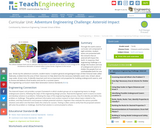
Through this earth science curricular unit, student teams are presented with the scenario that an asteroid will impact the Earth. In response, their challenge is to design the location and size of underground caverns to shelter the people from an uninhabitable Earth for one year. Driven by this adventure scenario, student teams 1) explore general and geological maps of their fictional state called Alabraska, 2) determine the area of their classroom to help determine the necessary cavern size, 3) learn about map scales, 4) test rocks, 5) identify important and not-so-important rock properties for underground caverns, and 6) choose a final location and size.

It was approximately 40,000 years ago that mankind first donned a pair of shoes. During humanitys long history of footwear, and an equally broad array of styles, the basic fundamentals of Western shoemaking remained mostly unchanged until the mid-nineteenth century. In the 1800s, the small state of Massachusetts revolutionized the shoemaking industry, cladding the feet of consumers nationwide in unprecedented numbers. One of Americas original colonies, Massachusetts found itself at the heart of the nations shoemaking industry by attracting and retaining skilled shoemakers and shoe machinery engineers. Only when the technology that Massachusetts' shoemakers invented became available beyond the state did the industrys market expand throughout the country. Even with the spread of industrialization, Massachusetts remained the largest producer of shoes in the United States through World War I, responsible for nearly forty percent of Americas shoes and home to an equal percentage of its shoemakers. This exhibition was created as part of the DPLAs Public Library Partnerships Project by collaborators from Digital Commonwealth. Exhibition organizer: Anna Fahey-Flynn.

Students examine an image produced by a cabinet x-ray system to determine if it is a quality bone mineral density image. They write in their journals about what they need to know to be able to make this judgment. Students learn about what bone mineral density is, how a BMD image can be obtained, and how it is related to the x-ray field. Students examine the process used to obtain a BMD image and how this process is related to mathematics, primarily through logarithmic functions. They study the relationship between logarithms and exponents, the properties of logarithms, common and natural logarithms, solving exponential equations and Beer's law.

In 1803, the United States purchased the Louisiana Territory800,000 square miles of land in the interior of North America. Most of this land had not been previously explored or documented. President Thomas Jefferson chose Meriwether Lewis and William Clark to lead an ambitious military expedition, seeking a northwestern passage to the Pacific Ocean and to document their journey in this unknown territory. Starting in what is now Missouri, the expedition followed the Missouri River and passed through present-day Montana on its way to the Pacific. The explorers commented on the beauty of the landscape and the abundance of animals, and their descriptions attracted fur traders and others ready to take advantage of the region's abundant natural resources. The discovery of gold in 1862 brought in the first rush of people and subsequent mining forever changed the region. The mining industry demanded support in the form of towns, railroads, logging, ranching, and farming. These industries shaped Montana and the people who settled there. This exhibition explores the industries that brought settlers to Montana from the early days to the 1920s. Each industry had its own boom and bust cycle that impacted the residents and the future of the state. This exhibition was created as part of the DPLAs Public Library Partnerships Project by collaborators from Montana Memory Project: Jennifer Birnel, Della Yeager, Cody Allen, Dale Alger, Caroline Campbell, Carly Delsigne, Pam Henley, Stef Johnson, Lisa Mecklenberg-Jackson, Laura Tretter, and Franky Abbott. Exhibition organizers: Jennifer Birnel and Franky Abbott.
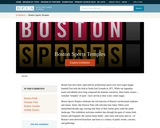
Boston Sports Temples celebrates the rich histories of Bostons professional stadiums and arenas. Some, like Fenway Park, still welcome fans today. Others were demolished decades ago, leaving only hints of their former glory amid the urban landscape. This exhibition welcomes modern fans through the gates of venues both famous and forgotten: the various home fieldsand courts and tracks and iceof Bostons most beloved franchises and hosts to a century of public events, concerts, and gatherings. Featuring historical photographs from the Boston Public Librarys extensive archives, Boston Sports Temples draws from thousands of negatives and prints dating from the early twentieth century through the 1960s. The images capture the unique character of Bostons historic sports venues, memorable moments, and the communities of athletes, fans, and staff who have come together within their walls. Together, these vintage materials provide an invaluable window into the past and a nostalgic look back at our city, our deep sporting traditions, and generations of passionate fandom. Created by the Boston Public Library.

The Lawrence Textile Strike was a public protest mainly of immigrant workers from several countries, including Austria, Belgium, Cuba, Canada, France, England, Germany, Greece, Ireland, Italy, Lithuania, Netherlands, Norway, Poland, Portugal, Russia, Scotland, Spain, Syria, and Turkey. According to the 1910 census, 65% of mill workers (many of whom eventually struck) lived in the United States for less than 10 years; 47% for less than five years. Prompted by a wage cut, the walkout spread quickly from mill to mill across the city. Strikers defied the assumptions of conservative trade unions within the American Federation of Labor that immigrant, largely female and ethnically diverse workers could not be organized. The Lawrence strike is referred to as the Bread and Roses strike and The Strike for Three Loaves." The first known source to do so was a 1916 labor anthology, The Cry for Justice: An Anthology of the Literature of Social Protest by Upton Sinclair. Prior to that, the slogan, used as the title of a 1911 poem by James Oppenheim, had been attributed to Chicago Women Trade Unionists. It has also been attributed to socialist union organizer Rose Schneiderman. James Oppenheim claimed his seeing women strikers in Lawrence carrying a banner proclaiming We Want Bread and Roses Too inspired the poem, Bread and Roses. The poem, however, was written and published in 1911 prior to the strike. Later the poem was set to music by Caroline Kohlsaat and then by Mimi Farina. The song and slogan are now important parts of the labor movement and womens movement worldwide. This exhibition was made in collaboration with the Lawrence History Center and the University of Massachusetts Lowell History Department.
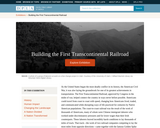
As the United States began the most deadly conflict in its history, the American Civil War, it was also laying the groundwork for one of its greatest achievements in transportation. The First Transcontinental Railroad, approved by Congress in the midst of war, helped connect the country in ways never before possible. Americans could travel from coast to coast with speed, changing how Americans lived, traded, and communicated while disrupting ways of life practiced for centuries by Native American populations. The coast-to-coast railroad was the result of the work of thousands of Americans, many of whom were Chinese immigrant laborers who worked under discriminatory pressures and for lower wages than their Irish counterparts. These laborers braved incredibly harsh conditions to lay thousands of miles of track. That trackthe work of two railroad companies competing to lay the most miles from opposite directionscame together with the famous Golden Spike at Promontory Summit in Utah on May 10, 1869. This exhibition explores the construction of the first Transcontinental Railroad and its impact on American westward expansion. This exhibition was created as part of the DPLAs Digital Curation Program by the following students as part of Professor Krystyna Matusiak's course "Digital Libraries" in the Library and Information Science program at the University of Denver: Jenifer Fisher, Benjamin Hall, Nick Iwanicki, Cheyenne Jansdatter, Sarah McDonnell, Timothy Morris and Allan Van Hoye.
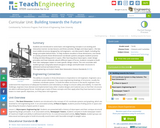
Students are introduced to some basic civil engineering concepts in an exciting and interactive manner. Bridges and skyscrapers, the two most visible structures designed by civil engineers, are discussed in depth, including the design principles behind them. To help students visualize in three dimensions, one hands-on activity presents three-dimensional coordinate systems and gives students practice finding and describing points in space. After learning about skyscrapers, tower design principles and how materials absorb different types of forces, students compete to build their own newspaper towers to meet specific design criteria.The unit concludes with student groups using balsa wood and glue to design and build tower structures to withstand vertical and lateral forces.

CATCH Healthy Smiles is a program for grades Pre-K – 2 that is designed to improve the oral health of students by teaching about and encouraging proper toothbrushing and flossing techniques, a nutritious diet, and regular visits to a dentist.
Through the program, students learn about the major factors that cause tooth decay and develop the skills needed to maintain a healthy smile. The CATCH Healthy Smiles program is designed to help students:
* Discover the causes of tooth decay, including dietary choices and poor oral health habits in our oral health education programs;
* Develop skills for brushing, flossing, and choosing tooth-healthy foods & drinks;
* Recognize the importance of regular dental visits; and,
* Create personal oral health care goals.
CATCH Healthy Smiles was developed by researchers at the Michael & Susan Dell Center for Healthy Living at The University of Texas Health Science Center at Houston (UTHealth) School of Public Health, with funding support from the National Institutes of Health.
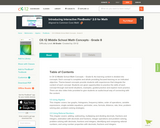
In CK-12 Middle School Math Concepts – Grade 8, the learning content is divided into concepts. Each concept is complete and whole providing focused learning on an indicated objective. Theme-based concepts provide students with experiences that integrate the content of each concept. Students are given opportunities to practice the skills of each concept through real-world situations, examples, guided practice and explore more practice. There are also video links provided to give students an audio/visual way of connecting with the content.
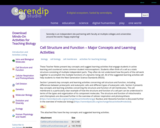
This overview presents key concepts that students often do not learn from standard textbook presentations and suggests a sequence of learning activities to help students understand how the parts of a cell work together to accomplish the multiple functions of a dynamic living cell. Suggested activities also reinforce student understanding of the relationships between molecules, organelles and cells, the diversity of cell structure and function, and the importance and limitations of diffusion. This overview provides links to Web resources, hands-on activities and discussion activities.
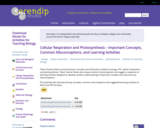
This overview of energy, cellular respiration and photosynthesis summarizes important concepts and common misconceptions. It also suggests a sequence of learning activities to overcome misconceptions, develop student understanding of important concepts, and relate these concepts to familiar topics such as breathing, food, body weight, and plant growth.
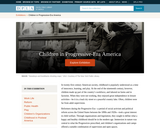
In twenty-first century American society, childhood is popularly understood as a time of innocence, learning, and play. At the end of the nineteenth century, however, children made up part of the countrys workforce, and labored on farms and in factories. When they were not working, they enjoyed great independence in leisure activitiesbe it in a loud city street or a peaceful country lake. Often, children were far from adult supervision. Reformers during the Progressive Era period of social activism and political reform across the United States between the 1890s and 1920s took a great interest in child welfare. Through organizations and legislation, they sought to define what a happy and healthy childhood should be in the modern age. Immersion in nature was central to what the Progressives prescribed, and childrens organizations and camps offered a suitable combination of supervision and open spaces. The formula for a healthy childhood was further refined in postwar America. Children were given a distinct place in the family and home, as well as within the consumer market with the emergence of teenage culture and buying power. This exhibition was created as part of the DPLA's Public Library Partnerships Project by collaborators from the Digital Library of Georgia and Georgia's public libraries.
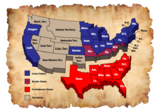
The goal of this module is to provide USII students with background knowledge in the Civil War as they begin the Reconstruction curriculum. Each day begins with a Hook for the day’s content. This hook is designed to engage students in the day’s content through a whole class or small group discussion. Students will independently review the provided Learning Resources for each Learning Intention. They should review all of the available resources to get a full understanding of this topic. Students will independently complete the Success Check for all Learning Intentions to receive credit for the module. There are optional Extension activities associated with each day. This extension is designed to connect USII Geography content with the Civil War content. Google Drive Folder with all resources (must make a copy of each resource to modify): https://drive.google.com/drive/folders/1jG7DTzswj3bsZM7xKHfMgJhVM07evQfN?usp=sharing Google Docs Lesson plan: https://docs.google.com/document/d/1ErmsDxexiKYJNbqz49QqIGAxuDHZ00O2NJ6B5X3caww/copy
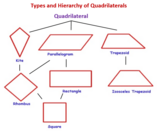
The students will visualize how the properties of Quadrilaterals can help them determine the exact shape of the figure. The students will create a model of the properties and compare them to the results the students have from data they have found